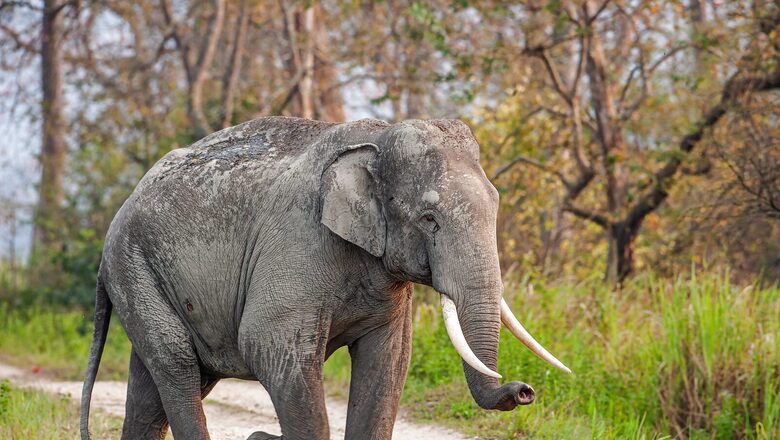
views
Every year, March 3 is celebrated as World Wildlife Day to celebrate and raise awareness of the world’s wildlife and animals – and what better way to mark it than to lend a helping hand to an environmental conservation project and take care of sick, injured or abandoned animals? In 2023, nearly 72% of Indian travellers intend to travel for a purpose. Volunteering and ecotourism can offer a meaningful opportunity to give back to local communities. There are many wonderful non-profit organizations and programs around the world. Booking.com has selected five incredible destinations where travellers can make a positive impact. From rehabilitating lions in South Africa to recuperating elephants in India, these rewarding wildlife trips will help make a difference.
Monitoring Lions – Limpopo, South Africa
Occupying South Africa’s northern reaches, Limpopo is a huge and diverse province characterized by vast open spaces and terrific wildlife watching. Within Limpopo, the wildlife charity Global Vision International (GVI) ensures the long-term survival of lions with a team dedicated to the ongoing research of these charismatic big cats. Situated on a private game reserve which is home to lions, leopards, elephants, buffalos and rhinos, travellers can volunteer to work and live alongside these extraordinary animals and assist in critical wildlife conservation work. Volunteers will help with all aspects of research and monitor the lion’s feeding behaviour, movement, location, and health. When not working directly with the king of the jungle, travellers will have the opportunity to get involved in other important conservation efforts, such as the removal of invasive vegetation. Since the program began, volunteers have supported the management and conservation of over three million hectares of protected areas in Limpopo.
Also Read: The New Era of Sustainable Luxury in Home Decor
Saving Tortoises – Puerto Ayora, Ecuador
The Galápagos Islands isolation from mainland Ecuador has allowed its animals to evolve according to their surroundings, a fact that was instrumental in helping Charles Darwin formulate his theories on evolution and natural selection. Today, the islands are supported by volunteers who dedicate their time to conserving this extraordinary ecosystem, and there’s a range of opportunities including saving endangered giant tortoises. Santa Cruz is an island in Ecuador’s Galápagos National Park and home to the town of Puerto Ayora, where the Charles Darwin Research Station has a breeding program for giant tortoises. Volunteers will spend time at the El Chato nature reserve, removing invasive plant species that are harmful and planting grasses for them to eat. Free from natural predators, the animal inhabitants of the island roam freely and without fear, so volunteers can expect plenty of opportunities to observe these unique species respectfully in their natural habitat, including not just the tortoises swimming near shore, but friendly sea lions and iguanas basking in the sun.
Recuperating Elephants – Jaipur, India
Those who adore animals will always have a special place in their hearts for them. They take good care of them whenever they come across an animal, regardless of whether it belongs to them or not. One species in particular, Elephants, is loved and cherished by people all around the world. By getting you up close to them and showing you how they go about their daily lives, the Elephant Conservation Program in India will help anyone learn more about these devoted creatures. This programme will allow travellers to do all kinds of engaging activities with elephants, such as bathe them, take care of their feet, and feed them their favourite meals. An opportunity to participate in an elephant care programme in Jaipur, India’s Historic City is through the Wildlife Volunteer India initiative. The Elephant Village, located close to Amber Fort, is the first elephant-themed community in India and the third worldwide. This hamlet, which covers about 30 hectares, provides all the facilities—including a large lake—that elephants need to grow and have fun.
Caring for injured birds – San Francisco, United States
Famous for its Golden Gate Bridge, San Francisco is located in the northern part of California and home to around 450 different species of seabirds including the Canada goose and mallard. International Bird Rescue (IBR) provides critical care to seabirds who become sick or injured due to oil spills in California: since 1971 they have admitted over 125,000 birds but they can’t do it without the help of volunteers. The non-profit organization offers different levels of volunteering, so the more comfortable travellers become with the birds the more responsibilities they can take on, with the opportunity to help with all stages of care from rescue to rehabilitation and release. San Francisco is one of the most photographed places in the world from its incredible city vistas to its eclectic neighbourhoods and abundance of wildlife.
Protecting Jaguars – Tortuguero, Costa Rica
Since the 1950s, the jaguar population in America has plummeted to an estimated 14,000. These dwindling numbers have resulted in an ongoing effort to create programs and policies that protect these elusive creatures. With the charity Global Vision International (GVI), volunteers have the opportunity to make a big difference in jaguar conservation by monitoring and researching their prey species, feeding behaviours and population numbers. Once collected, this information is used by the Costa Rican Ministry of Environment to develop well-rounded and consistent conservation policies. Kekoldi Indigenous Reserve is a species-rich and beautiful stretch of rainforest considered a global biological hotspot and home to several endangered wild jungle cats from the biggest jaguar to the smallest oncilla. Further up the coast is the village of Tortuguero, Costa Rica’s remote wildlife hotspot with fresh-water canals and tropical foliage sandwiched between a lagoon and the volcanic beaches along the Caribbean Sea.
Read all the Latest Lifestyle News here




















Comments
0 comment